As a tech enthusiast, I’ve always been fascinated by the concept of smart homes. Having a personal assistant at home that can take care of mundane tasks without me lifting a finger sounds like a dream come true. In this article, I will share my thoughts on the 5 best smart home assistants for your home in 2023.
Introduction
In today’s fast-paced world, smart home assistants have emerged as indispensable companions, utilizing the power of artificial intelligence (AI) to revolutionize how we interact with our living spaces. These innovative devices seamlessly integrate into our homes, offering an array of capabilities that span from controlling lighting and temperature to ensuring top-notch security. This article will explore the fascinating realm of smart home assistants, shedding light on their features, functionality, and the convenience they bring to our daily lives.
Understanding the Role of Smart Home Assistants
Smart home assistants are the ultimate automation hub, empowering homeowners with unparalleled control and convenience. These AI-powered devices connect to the internet, allowing users to manage various aspects of their home through voice commands or user-friendly smartphone applications. Whether you want to adjust the lighting ambiance, set the perfect temperature, or even brew a fresh cup of coffee in the morning, smart home assistants can effortlessly execute these tasks, elevating your home’s functionality to new heights.
Seamlessly Connected to Your Home Ecosystem
One of the key advantages of smart home assistants is their ability to integrate with a wide range of smart devices within your home ecosystem. From smart bulbs and thermostats to security cameras and door locks, these assistants act as the central control hub, offering a unified and intuitive interface to manage and monitor all connected devices. With a simple voice command or a few taps on your smartphone, you can create customized scenes, schedule routines, and enjoy a truly interconnected home experience.
Voice Commands: The Gateway to Hands-Free Automation
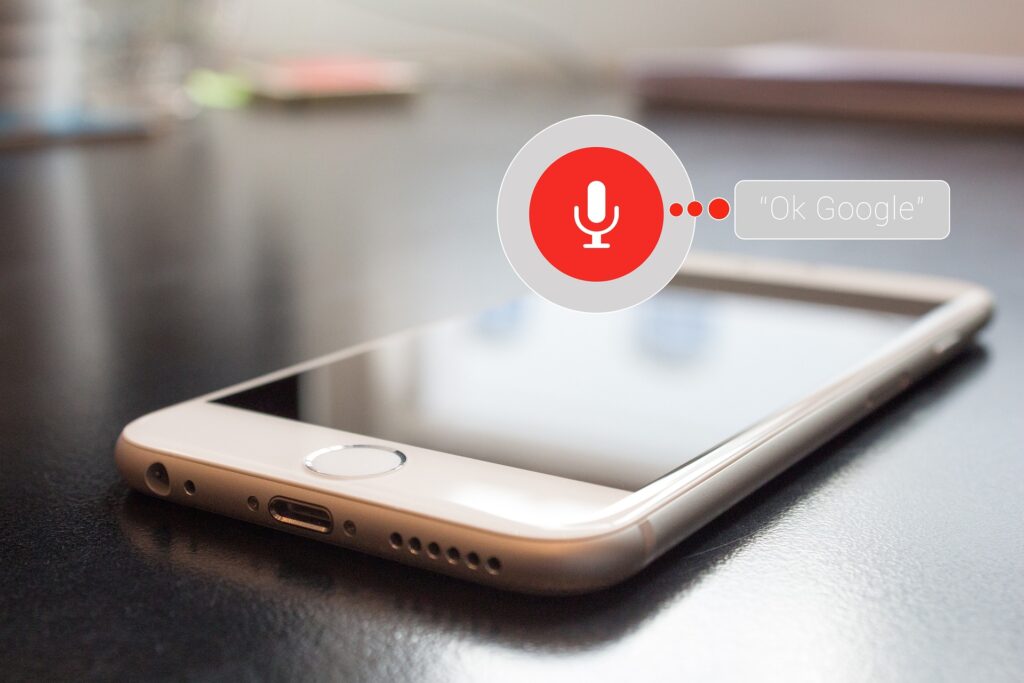
The ability to control your smart home with just your voice is one of the most attractive features of these assistants. Equipped with advanced voice recognition technology, smart home assistants can accurately interpret your commands and carry out tasks effortlessly. Imagine dimming the lights while watching a movie, adjusting the thermostat without leaving the comfort of your couch, or even ordering groceries with a simple voice request. The realm of possibilities becomes boundless when coupled with the remarkable capabilities of smart home assistants, bringing everything within your grasp.
User-Friendly Smartphone Apps for Enhanced Control
In addition to voice commands, smart home assistants often come with dedicated smartphone applications that offer an alternative way to manage your home automation. These apps provide an intuitive interface, allowing you to control and monitor your smart devices from anywhere, whether at home or on the go. With just a few taps on your smartphone screen, you can create:
- Personalized schedules
- Receive real-time alerts
- Seamlessly interact with your home ecosystem
- Ensure maximum convenience and peace of mind.
As technology continues to evolve, smart home assistants have solidified their position as the cornerstone of modern home automation. With their AI-powered intelligence, seamless integration with a wide range of devices, and the convenience of voice commands or smartphone apps, these assistants empower homeowners to transform their houses into smart, intuitive, and personalized living spaces. Embrace the future of home automation and discover the endless possibilities that smart home assistants can bring to your everyday life.
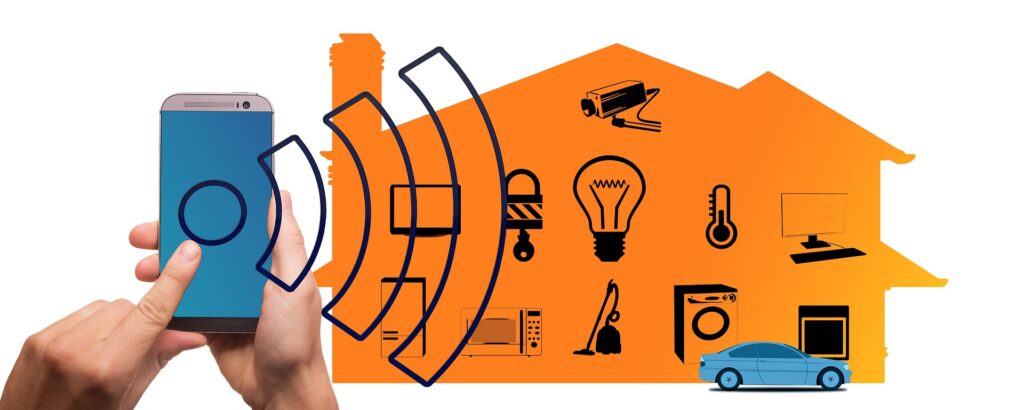
Factors To Consider When Choosing A Smart Home Assistant
Choosing the right smart home assistant is a critical decision that can significantly impact your home automation experience. With a plethora of options available in the market, it’s essential to consider various factors such as:
- Compatibility
- Functionality
- Cost
- User Experience
- Privacy and Security
This article will explore the key factors you should consider when selecting a smart home assistant. Let’s dive in and decide on a seamless and integrated home automation setup.
Compatibility: Ensuring Harmony With Your Existing Devices
Compatibility with your current smart devices is paramount when choosing a smart home assistant. Before making a purchase, review the assistant’s specifications and ensure it supports your existing devices’ communication protocols and standards. Whether it’s Zigbee, Z-Wave, Wi-Fi, or other proprietary technologies, compatibility ensures seamless integration and control, avoiding potential frustrations or limitations in your smart home ecosystem.
Capabilities: Assessing the Assistant's Versatility
Each smart home assistant has unique capabilities, and it’s crucial to assess whether they align with your specific needs and preferences. Consider the tasks you want your assistant to perform, such as:
- Controlling lights
- Adjusting thermostats
- Controlling security systems
- Playing music
Some assistants excel in voice recognition and natural language processing, allowing intuitive interactions, while others focus on specialized functions like home security or entertainment. Evaluate the assistant’s skill set and prioritize the features that matter most to you.
Cost: Balancing Budget and Functionality
Smart home assistants come in a wide price range, and balancing your budget and desired functionality is essential. While some entry-level assistants are available for under $50, more advanced models with additional features may range upwards of $500. Consider your long-term goals, the complexity of your desired automation setup, and the value you expect to derive from the assistant. Remember that the cost includes the device itself, ongoing software updates, and potential subscription fees for enhanced features.
User Experience: Interface and Ease of Use
A seamless and intuitive user experience is vital when interacting with your smart home assistant. Research user reviews and explore the assistant’s interface, whether it’s through voice commands, smartphone apps, or both. Evaluate the ease of setup, customization options, and overall user satisfaction. Look for an assistant that offers a user-friendly interface, clear instructions, and reliable customer support to ensure hassle-free integration and an enjoyable smart home experience.
Privacy and Security: Protecting Your Personal Data
As smart home assistants often handle sensitive information and interact with various aspects of your home, privacy, and security should be a top priority. Investigate the assistant’s privacy policy and data handling practices to ensure your personal information remains secure. Look for features like voice recognition, encryption protocols, and robust security measures that protect your data from unauthorized access. It’s also crucial to stay informed about software updates and patches to address potential vulnerabilities.
When selecting a smart home assistant, considering compatibility, capabilities, cost, user experience, and privacy considerations will guide you toward the right choice for your home automation needs. By conducting thorough research and understanding your requirements, you can make an informed decision that seamlessly integrates with your existing devices, enhances functionality, and provides a personalized and secure smart home experience. Choose wisely and embrace the convenience and efficiency that a smart home assistant can bring to your daily life.
Top 5 Smart Home Assistants for 2023
Without further ado, here are the top 5 smart home assistants for your home in 2023:
Amazon Alexa
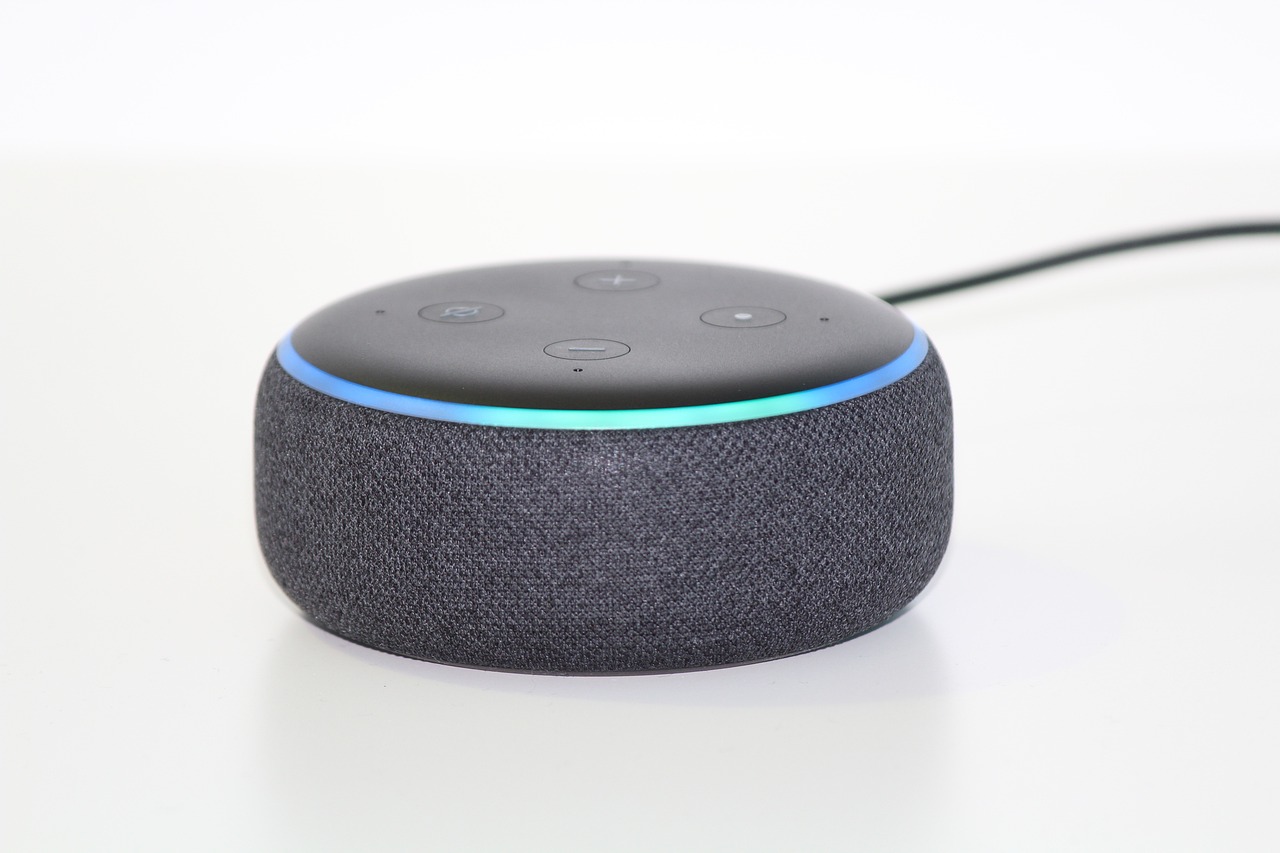
Regarding smart home assistants, Amazon Alexa stands tall as a household name, renowned for its exceptional capabilities and extensive compatibility. With the ability to control a vast array of devices and offer a wide range of features, Alexa has captured users’ hearts worldwide. In this article, we will delve into the versatility of Amazon Alexa, highlighting its impressive functionality in managing lights, thermostats, and security cameras, answering questions, playing music, and facilitating convenient online shopping. Join us as we uncover the power of this leading smart home assistant.
Unparalleled Device Control:
As a leading smart home assistant, Amazon Alexa boasts compatibility with an extensive range of devices, making it an ideal choice for homeowners seeking a seamless and integrated home automation experience. With its robust ecosystem, Alexa can effortlessly control lights, thermostats, security cameras, and other smart devices, transforming your living space into a fully interconnected environment. Whether you prefer voice commands or smartphone apps, Alexa simplifies device management, allowing you to easily create customized schedules, adjust settings, and monitor your home.
Intelligent Virtual Assistant:
Amazon Alexa goes beyond device control, doubling as an intelligent virtual assistant capable of answering questions and providing real-time information. By leveraging its vast knowledge base, Alexa can serve as your personal encyclopedia, delivering quick answers to queries ranging from general knowledge to weather updates and sports scores. With a simple voice command, you can obtain valuable information, making Alexa an invaluable addition to your home, enhancing convenience and fostering productivity.
Seamless Entertainment Experience:
Music enthusiasts and entertainment aficionados will find Amazon Alexa a true gem. With its ability to connect to popular music streaming services, such as Spotify, Apple Music, and Amazon Music, Alexa can effortlessly play your favorite tunes or curate personalized playlists based on your preferences. By integrating with smart speakers and sound systems, Alexa transforms your living room into a concert hall, providing immersive audio experiences at your command. Additionally, Alexa can control video streaming devices, allowing you to enjoy your favorite movies and shows with voice-controlled convenience.
Simplified Shopping with Alexa:
One of the unique features of Amazon Alexa is its integration with the Amazon platform, allowing users to shop for products seamlessly. With a simple voice command, you can add items to your shopping list or even place orders directly from Amazon, making the shopping experience more efficient and convenient. From groceries and household essentials to electronics and gifts, Alexa simplifies the process, eliminating the need for manual browsing and typing.
Amazon Alexa has solidified its position as one of the most versatile and popular smart home assistants available today. With its extensive device compatibility, intelligent virtual assistant capabilities, seamless entertainment experience, and simplified shopping integration, Alexa offers a comprehensive solution for transforming your home into a smart, connected haven. Embrace the power of Amazon Alexa and unlock the convenience, efficiency, and entertainment it brings to your daily life.
Google Assistant
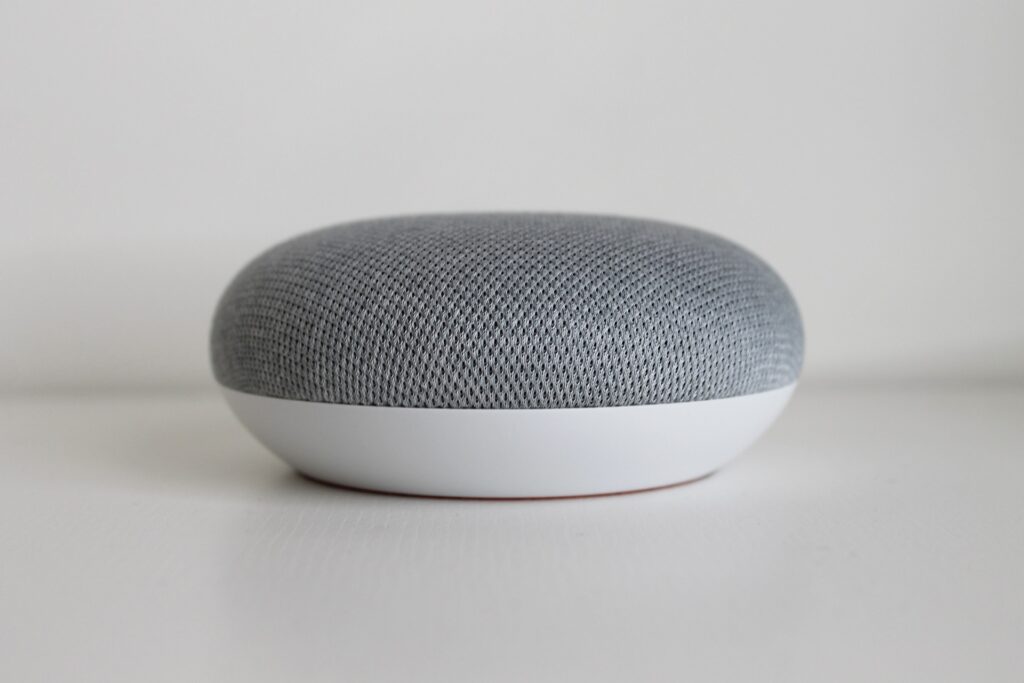
Google Assistant, renowned for its exceptional intelligence and seamless integration with Google’s suite of services, has emerged as a powerful and popular smart home assistant. With its ability to control devices, provide answers to inquiries, make phone calls, and leverage Google’s vast ecosystem, Google Assistant offers a comprehensive solution for home automation enthusiasts. In this article, we will delve into the versatility of Google Assistant, highlighting its prowess in device control, information retrieval, communication, and integration with Google’s extensive range of services. Join us as we explore the boundless potential of this remarkable smart home assistant.
Effortless Device Control:
Google Assistant empowers users to effortlessly control a wide range of devices within their smart home ecosystem. With its compatibility with various smart devices, including lights, thermostats, and security systems, Google Assistant seamlessly integrates into your home automation setup. By issuing voice commands or utilizing the user-friendly smartphone app, you can easily adjust settings, create personalized routines, and monitor your devices. Google Assistant is a centralized control hub, offering a streamlined experience for managing your smart home’s functionality.
Intelligent Information Retrieval:
As a powerhouse of knowledge, Google Assistant harnesses the vast capabilities of Google’s search engine, providing users with instant answers to their queries. Whether seeking general knowledge, weather updates, sports scores, or the latest news, Google Assistant delivers accurate and relevant information promptly. With a simple voice command, you can tap into Google’s expansive database, making Google Assistant an invaluable virtual assistant for enhancing productivity and staying informed.
Seamless Communication Features:
Google Assistant takes communication to the next level, enabling users to make phone calls, send text messages, and even dictate emails using voice commands. By integrating with your smartphone and contacts, Google Assistant simplifies communication tasks, allowing you to stay connected without picking up your device. Whether you want to make a hands-free call while cooking or send a quick message on the go, Google Assistant provides a convenient and efficient solution, keeping you connected and productive.
Integration with Google Services:
One of Google Assistant’s standout features is its integration with Google’s suite of services, including Google Maps and Gmail. By leveraging these services, Google Assistant can provide personalized recommendations, navigate your routes, and access your email seamlessly. Need directions to a new restaurant? Simply ask Google Assistant to offer step-by-step directions based on real-time traffic data. Want to check your upcoming flight details? Google Assistant can retrieve the information directly from your Gmail account, ensuring a smooth and efficient travel experience.
Google Assistant is a versatile and intelligent smart home assistant, offering a wide range of capabilities that enhance home automation and productivity. With its seamless device control, intelligent information retrieval, communication features, and integration with Google’s suite of services, Google Assistant provides a comprehensive solution for transforming your home into a connected and efficient living space. Embrace the potential of Google Assistant and unlock a world of convenience, knowledge, and seamless connectivity for your daily life.
Apple HomeKit

Apple HomeKit, specifically tailored to seamlessly integrate with Apple’s ecosystem of devices, stands as a powerful smart home assistant. Designed to enhance home automation, HomeKit offers control over various aspects of your living space, including lighting, thermostats, security cameras, and more. With additional features like music playback and intelligent responses to inquiries, HomeKit brings Apple users a holistic smart home experience. In this article, we will explore the capabilities of Apple HomeKit, highlighting its compatibility with Apple devices, device control functionality, and integration with Siri, Apple’s voice assistant.
Seamless Integration with Apple Devices:
Apple HomeKit shines as a smart home assistant that flawlessly integrates with Apple’s ecosystem of devices. Whether it’s iPhones, iPads, or HomePods, HomeKit allows users to effortlessly control and manage their smart home devices. With HomeKit-enabled devices, you can create a cohesive and synchronized experience, commanding your smart home through a unified interface on your Apple devices. This level of integration ensures a seamless and intuitive user experience within the familiar Apple environment.
Comprehensive Device Control:
HomeKit empowers users to have precise control over their smart home devices. From adjusting lights and setting the perfect temperature to monitoring security cameras and managing door locks, HomeKit offers extensive control capabilities. The intuitive interface of the Home app allows users to create custom scenes and automate routines based on their preferences, making it easier than ever to tailor the ambiance and functionality of their smart home. Users can effortlessly manage their smart devices and personalize their home environment with a few taps on their Apple devices or a voice command to Siri.
Enhanced Entertainment and Information:
Apple HomeKit goes beyond device control, offering additional features that enhance entertainment and information retrieval. Users can enjoy seamless music playback through compatible devices, such as HomePod or AirPlay-enabled speakers, bringing their favorite tunes to any room with a simple command. HomeKit integrates with Siri, Apple’s voice assistant, allowing users to ask questions, get real-time information, and receive intelligent responses based on Siri’s vast knowledge base. This integration ensures a convenient and comprehensive smart home experience.
Siri Integration for Voice Control:
As an integral part of the Apple ecosystem, Apple HomeKit leverages Siri’s voice control capabilities. Users can control their smart home devices by issuing voice commands through Siri on their Apple devices or using the “Hey Siri” feature. This seamless integration enables hands-free control, allowing users to adjust settings, execute commands, and manage their smart home effortlessly using their voice. Whether it’s dimming the lights, changing the temperature, or checking the status of a device, Siri and HomeKit work together to create a truly voice-activated smart home experience.
Apple HomeKit offers Apple users a robust and integrated smart home assistant that seamlessly harmonizes with their existing devices and enhances home automation. With its compatibility within the Apple ecosystem, comprehensive device control, integration with Siri for voice commands, and additional entertainment and information features, HomeKit elevates the convenience, functionality, and overall smart home experience for Apple enthusiasts. Embrace the power of Apple HomeKit and unlock a new level of control and personalization within your smart home.
Samsung SmartThings
Samsung SmartThings, specifically designed to seamlessly integrate with Samsung’s ecosystem of devices, offers a robust smart home assistant for users seeking an immersive and interconnected home automation experience. With its ability to control lighting, thermostats, security cameras, and more, SmartThings empowers users to personalize their living space. SmartThings offers features such as music playback and intelligent responses to inquiries, enhancing the overall smart home experience. In this article, we will explore the capabilities of Samsung SmartThings, emphasizing its compatibility with Samsung devices, advanced device control functionality, and integration with Bixby, Samsung’s voice assistant.
Seamless Integration within the Samsung Ecosystem:
Samsung SmartThings shines as a smart home assistant that seamlessly integrates with Samsung’s ecosystem of devices. Whether it’s Samsung smartphones, tablets, or smart TVs, SmartThings creates a unified and cohesive experience, allowing users to control and manage their smart home devices effortlessly. This tight integration ensures a seamless user experience within the Samsung ecosystem, offering a familiar and intuitive interface to interact with and manage your smart home.
Comprehensive Device Control:
SmartThings empowers users with comprehensive control over many smart home devices. With SmartThings-compatible devices, users can effortlessly adjust lighting, set optimal temperatures, monitor security cameras, and manage other smart devices. The user-friendly SmartThings app provides an intuitive interface to customize and automate routines, allowing users to create personalized scenes and schedules based on their preferences. Whether through the app or voice commands, users have precise control over their smart home devices, tailoring their environment to suit their needs.
Enhanced Entertainment and Information:
Samsung SmartThings goes beyond device control, offering enhanced entertainment and information features. Users can enjoy seamless music playback through compatible devices such as Samsung smart speakers or connected audio systems, allowing them to fill their homes with their favorite tunes effortlessly. Moreover, SmartThings integrates with Bixby, Samsung’s voice assistant, enabling users to ask questions, receive real-time information, and access personalized recommendations. This integration enhances the overall smart home experience, combining entertainment and information retrieval in one comprehensive solution.
Bixby Integration for Voice Control:
As an integral part of the Samsung ecosystem, Samsung SmartThings leverages the power of Bixby, Samsung’s voice assistant, for convenient voice control. Users can control their smart home devices by issuing voice commands through Bixby on their Samsung devices, bringing a hands-free and seamless control experience to their smart home. Whether it’s adjusting settings, executing commands, or checking device status, Bixby and SmartThings work in tandem to deliver a voice-activated smart home experience that enhances convenience and accessibility.
Samsung SmartThings is a versatile and powerful smart home assistant within the Samsung ecosystem, seamlessly transforming homes into interconnected, personalized living spaces. With its compatibility with Samsung devices, comprehensive device control functionality, integration with Bixby for voice commands, and enhanced entertainment and information features, SmartThings elevates the convenience, functionality, and overall smart home experience for Samsung users. Embrace the potential of Samsung SmartThings and unlock a new level of control, personalization, and connectedness within your smart home.
Microsoft Cortana
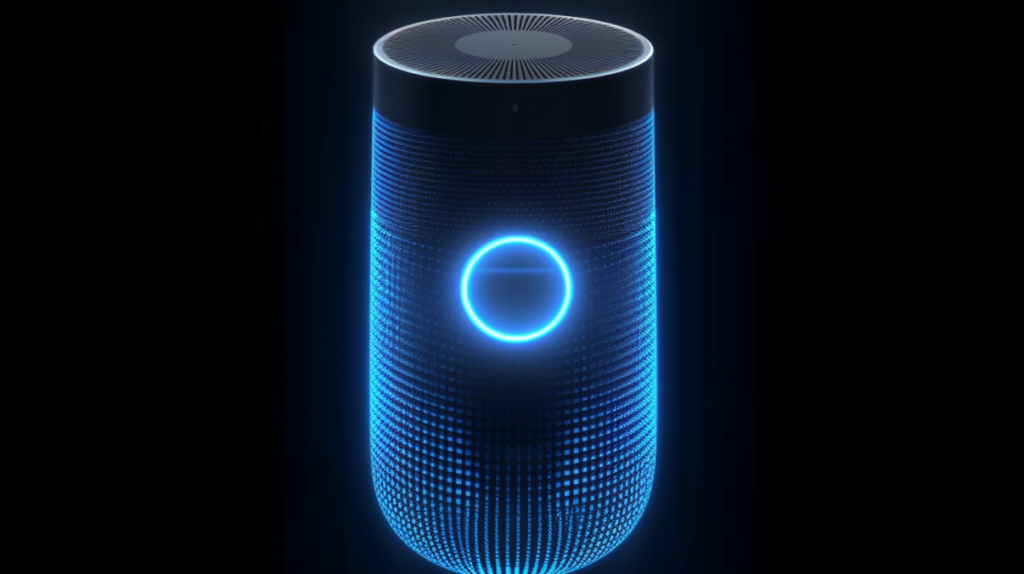
Microsoft Cortana, a smart home assistant intricately designed to seamlessly integrate with Microsoft’s ecosystem of devices, presents a powerful solution for home automation enthusiasts. With its ability to control lighting, thermostats, security cameras, and more, Cortana empowers users to transform their living spaces into smart homes. Additionally, Cortana offers features such as music playback and intelligent responses to inquiries, delivering a comprehensive smart home experience. In this article, we will delve into the capabilities of Microsoft Cortana, highlighting its compatibility with Microsoft devices, advanced device control functionality, and integration with Microsoft’s suite of services, such as Outlook and OneDrive.
Seamless Integration within the Microsoft Ecosystem:
Microsoft Cortana excels as a smart home assistant that seamlessly integrates within the Microsoft ecosystem. Compatible with a range of Microsoft devices, including Windows PCs, Surface devices, and Xbox consoles, Cortana creates a cohesive and interconnected experience. This integration ensures a smooth user experience, providing a unified interface to control and manage smart home devices within the familiar Microsoft environment.
Comprehensive Device Control:
Cortana empowers users with comprehensive control over various smart home devices. With Cortana-enabled devices, users can effortlessly adjust lighting, set preferred temperatures, monitor security cameras, and manage other compatible smart devices. Users can easily create personalized routines and automation based on their preferences by leveraging the intuitive Cortana interface. Whether through voice commands or the Cortana app, users have precise control over their smart home, customizing their environment to suit their needs.
Enhanced Entertainment and Information:
Microsoft Cortana extends beyond device control, offering enhanced entertainment and information features. Users can enjoy seamless music playback through compatible devices, immersing their homes with their favorite tunes. Additionally, Cortana integrates with Microsoft’s suite of services, such as Outlook and OneDrive. By leveraging these services, Cortana can provide intelligent responses to inquiries, access email, and retrieve files from the user’s OneDrive. This integration enhances the overall smart home experience, combining entertainment and information retrieval within a comprehensive solution.
Integration with Microsoft Services:
One of Cortana’s standout features is its seamless integration with Microsoft’s suite of services. Users can leverage Cortana’s integration with Outlook to access their email, manage appointments, and set reminders, all through simple voice commands. Cortana’s integration with OneDrive allows users to access and retrieve files stored in their cloud storage effortlessly. This tight integration with Microsoft services ensures a streamlined experience, enhancing productivity and convenience within the smart home environment.
Microsoft Cortana is a powerful smart home assistant within the Microsoft ecosystem, delivering an elevated home automation experience. With its compatibility with Microsoft devices, comprehensive device control functionality, integration with Microsoft’s suite of services, and enhanced entertainment and information features, Cortana brings convenience, efficiency, and connectedness to smart homes. Embrace the power of Microsoft Cortana and unlock a new level of control, personalization, and productivity within your smart home environment.
Pros and Cons of the Features of Each Smart Home Assistant
Let’s take a closer look at the features of each smart home assistant:
Amazon Alexa
Pros
-
Convenience
-
Smart Home Integration
-
Broad Compatibility
-
AI-Powered Assistance
-
Skills and Customization
-
Music and Entertainment
-
Smart Home Routines
-
Multi-Room Audio
Cons
-
Privacy Concerns
-
Dependency on Internet
-
Lack of Localization
-
Device Compatibility
-
Initial Learning Curve
-
Ambient Noise Interference
-
Power Dependency
Pro
Convenience: With Amazon Alexa, you can control various aspects of your smart home using voice commands, offering a hands-free and convenient experience.
Smart Home Integration: Alexa seamlessly integrates with a wide range of smart home devices, allowing you to control lights, thermostats, locks, and more, all with voice commands.
Broad Compatibility: Alexa works with numerous third-party apps and services, providing a versatile ecosystem for entertainment, news, weather updates, and other functions.
AI-Powered Assistance: Powered by advanced artificial intelligence (AI), Alexa can answer questions, provide real-time information, set reminders, and even order products online.
Skills and Customization: Alexa offers a vast library of skills, enabling you to customize its functionality and expand its capabilities to suit your unique needs and preferences.
Music and Entertainment: Enjoy a wide selection of music streaming services, audiobooks, and podcasts with Alexa, turning your home into an entertainment hub.
Smart Home Routines: Create customized routines to automate tasks such as turning off lights, adjusting thermostats, and playing music with a single voice command.
Multi-Room Audio: Alexa’s multi-room audio feature allows you to synchronize and control music playback across multiple Alexa devices in different rooms.
Cons
Privacy Concerns: Some users express concerns about privacy as Alexa constantly listens for voice commands, potentially raising issues about data security and personal information.
Dependency on Internet: Alexa heavily relies on a stable internet connection to function properly, so any disruptions in the network can temporarily limit its capabilities.
Lack of Localization: While Alexa is available in multiple languages, its full range of features and capabilities may be limited to specific regions, limiting its functionality in certain markets.
Device Compatibility: Although Alexa supports a wide range of smart home devices, compatibility issues may arise with some older or less common devices.
Initial Learning Curve: New users may experience a learning curve when setting up and configuring Alexa, as well as understanding its various features and settings.
Ambient Noise Interference: In noisy environments, Alexa might have difficulty hearing and responding to voice commands accurately, requiring users to raise their voice or repeat commands.
Power Dependency: Alexa requires a constant power source, which means it won’t work during power outages or in situations where power supply is disrupted.
Google Assistant
Pros
-
Natural Language Processing
-
Deep Integration with Google Services
-
Knowledge and Information
-
Smart Home Control
-
Voice Match
-
Multi-Room Capability
-
Routine Automation
-
Third-Party App Integration
Cons
-
Privacy Concerns
-
Internet Dependency
-
Limited Device Compatibility
-
Localization Limitations
-
Accuracy in Complex Commands
-
Ambient Noise Sensitivity
-
Power Dependency
Pros
Natural Language Processing: Google Assistant excels at understanding and interpreting natural language commands, making it easy to interact with and control your smart home devices using conversational voice commands.
Deep Integration with Google Services: Enjoy seamless integration with various Google services such as Google Maps, Calendar, and Gmail, allowing you to access information and perform tasks effortlessly.
Knowledge and Information: As a powerful AI assistant, Google Assistant provides instant answers to questions, access to real-time information, news updates, weather forecasts, and more, leveraging Google’s vast knowledge base.
Smart Home Control: Google Assistant supports a wide range of smart home devices and platforms, offering comprehensive control over lights, thermostats, security cameras, and other connected devices.
Voice Match: Google Assistant’s Voice Match feature allows it to recognize individual voices, providing personalized responses and access to individual profiles and preferences for different family members.
Multi-Room Capability: With Google Assistant, you can create speaker groups and synchronize audio playback across multiple rooms, delivering a seamless and immersive audio experience throughout your home.
Routine Automation: Automate repetitive tasks and create personalized routines, enabling Google Assistant to perform multiple actions with a single voice command, such as turning off lights, playing music, and adjusting thermostat settings.
Third-Party App Integration: Google Assistant integrates with a wide array of third-party apps, allowing you to control and access various services, including music streaming, smart home security, and more.
Cons
Privacy Concerns: Similar to other voice-controlled assistants, Google Assistant raises privacy concerns as it continuously listens for voice commands, potentially compromising data security and privacy.
Internet Dependency: Google Assistant relies on a stable internet connection to function optimally, so interruptions or outages can temporarily limit its capabilities.
Limited Device Compatibility: While Google Assistant supports numerous smart home devices, compatibility issues may arise with certain less common or older devices, requiring additional troubleshooting or device replacements.
Localization Limitations: Some features and capabilities of Google Assistant may be limited to specific regions or languages, resulting in a reduced functionality in certain markets.
Accuracy in Complex Commands: Occasionally, Google Assistant may struggle to accurately understand complex or context-based voice commands, leading to misunderstandings or incomplete actions.
Ambient Noise Sensitivity: In noisy environments, Google Assistant might have difficulty accurately hearing and responding to voice commands, necessitating users to raise their voice or repeat commands.
Power Dependency: Google Assistant requires a constant power source, rendering it inactive during power outages or when power supply is disrupted.
Apple HomeKit
Pros
-
Seamless Integration with iOS Devices
-
Siri Integration
-
Enhanced Privacy and Security
-
Wide Range of Compatible Devices
-
Automation and Scenes
-
Remote Access
-
User-Friendly Interface
-
HomePod and Apple TV Integration
Cons
-
Limited Device Compatibility
-
Ecosystem Restriction
-
Dependency on Apple Devices
-
Relatively Limited Third-Party App Integration
-
Learning Curve for Advanced Features
-
Limited Voice Assistant Options
-
Network Dependency
-
Home Automation Hub Requirement
Pros
Seamless Integration with iOS Devices: Apple HomeKit offers seamless integration with iOS devices, allowing users to control and manage their smart home devices directly from their iPhones, iPads, or Macs.
Siri Integration: HomeKit enables users to control their smart home devices using voice commands through Siri, providing a convenient and hands-free experience.
Enhanced Privacy and Security: Apple HomeKit prioritizes user privacy and security, employing end-to-end encryption for all data transfers and ensuring that personal information remains secure.
Wide Range of Compatible Devices: HomeKit supports a wide range of smart home devices, including lights, thermostats, locks, cameras, and more, offering flexibility and compatibility options for a diverse smart home ecosystem.
Automation and Scenes: With HomeKit, users can create automation rules and scenes to streamline daily routines, allowing for personalized and customizable smart home experiences.
Remote Access: HomeKit enables remote access to your smart home devices, so you can control and monitor your home even when you are away, providing peace of mind and convenience.
User-Friendly Interface: HomeKit’s intuitive and user-friendly interface simplifies the process of setting up and managing smart home devices, making it accessible to both beginners and advanced users.
HomePod and Apple TV Integration: HomeKit integrates seamlessly with HomePod and Apple TV, acting as a hub to control devices remotely and provide enhanced connectivity options.
Cons
Limited Device Compatibility: While HomeKit supports a wide range of smart home devices, the platform may have limited compatibility with certain brands or models, which could require additional research or potential device replacements.
Ecosystem Restriction: HomeKit is primarily designed for iOS users, which may limit its compatibility with other non-Apple devices and platforms, potentially reducing its functionality in mixed device environments.
Dependency on Apple Devices: To fully utilize HomeKit’s capabilities, users need to own iOS devices or macOS devices, which could be a barrier for individuals who prefer other operating systems.
Relatively Limited Third-Party App Integration: Compared to other smart home platforms, HomeKit may have relatively limited integration with third-party apps and services, potentially impacting the breadth of functionality available.
Learning Curve for Advanced Features: HomeKit’s advanced features, such as automation and scene creation, may require some learning and experimentation to fully understand and utilize effectively.
Limited Voice Assistant Options: While HomeKit integrates with Siri, it may not offer the same level of voice assistant options as some competing platforms that support multiple voice assistants.
Network Dependency: HomeKit’s performance relies on a stable network connection, and any disruptions or internet outages may temporarily limit its functionality.
Home Automation Hub Requirement: Some advanced HomeKit features, such as remote access and automation, require an Apple HomePod or Apple TV to act as a hub, which could add an extra cost for users.
Samsung SmartThings
Pros
-
Extensive Device Compatibility
-
Centralized Control
-
Automation and Scenes
-
Versatile Integration
-
Hub Capabilities
-
Mobile App Control
-
Flexibility in Device Placement
-
Community Support and Development
Cons
-
Initial Setup Complexity
-
Reliance on Internet Connectivity
-
User Interface and App Experience
-
Automation Limitations
-
Response Time
-
Hub Requirement
-
Limited Voice Assistant Options
-
Customization Learning Curve
Pros
Extensive Device Compatibility: SmartThings supports a wide range of smart home devices, offering compatibility with various brands and models, allowing users to create a diverse and interconnected smart home ecosystem.
Centralized Control: SmartThings provides a unified platform for controlling and managing all your smart home devices, making it convenient to monitor and operate your entire connected home from one place.
Automation and Scenes: With SmartThings, users can create custom automation rules and scenes, enabling devices to interact and perform actions automatically based on specified triggers or schedules.
Versatile Integration: SmartThings integrates with numerous third-party devices, services, and platforms, expanding its functionality and allowing for seamless interoperability within the broader smart home ecosystem.
Hub Capabilities: SmartThings offers a hub that acts as a central control point for smart home devices, providing enhanced connectivity options, improved performance, and the ability to control devices locally.
Mobile App Control: The SmartThings mobile app allows users to control and monitor their smart home devices remotely, providing convenience and peace of mind when away from home.
Flexibility in Device Placement: SmartThings supports wireless connectivity options like Z-Wave and Zigbee, enabling devices to be placed throughout the home without the need for direct Wi-Fi connections.
Community Support and Development: SmartThings has an active community of developers and enthusiasts, offering a vast library of user-generated integrations, customizations, and solutions for expanding the platform’s capabilities.
Cons
Initial Setup Complexity: Setting up SmartThings and configuring devices may require some technical knowledge, and the initial setup process can be time-consuming, especially for users new to smart home technology.
Reliance on Internet Connectivity: SmartThings heavily depends on a stable internet connection to function properly, and any disruptions or outages may temporarily limit its capabilities.
User Interface and App Experience: While SmartThings has made improvements, some users find the user interface and app experience to be less intuitive and polished compared to competing smart home platforms.
Automation Limitations: While SmartThings offers automation capabilities, the platform may have some limitations in terms of advanced automation scenarios or complex conditional logic.
Response Time: Occasionally, users may experience delays in response time when controlling devices or executing automation routines, impacting the overall user experience.
Hub Requirement: Certain features and functionalities of SmartThings, such as local control and advanced automation, require the use of a SmartThings hub, adding an extra cost for users.
Limited Voice Assistant Options: SmartThings supports voice control through Samsung’s Bixby and integration with Amazon Alexa and Google Assistant, but it may not offer the same breadth of options as platforms dedicated to specific voice assistants.
Customization Learning Curve: Customizing and creating complex automations in SmartThings may require some learning and experimentation, particularly for users who are new to home automation.
Microsoft Cortana
Pros
-
Seamless Windows Integration
-
Natural Language Understanding
-
Microsoft Ecosystem Integration
-
Cross-Platform Availability
-
AI-Powered Assistance
-
Voice Control and Hands-Free Operation
-
Integration with Third-Party Apps
-
Customizable Skills and Routines
Cons
-
Limited Device Compatibility
-
Ecosystem Limitations
-
Declining Market Focus
-
Privacy Concerns
-
Less Extensive Skill Library
-
Learning Curve for New Users
-
Reliance on Internet Connectivity
-
Voice Recognition Accuracy
Pros
Seamless Windows Integration: Cortana seamlessly integrates with Windows devices, offering a unified experience across your computer, smartphone, and smart home, making it convenient to manage your home from various platforms.
Natural Language Understanding: Cortana’s advanced natural language processing capabilities enable it to understand and interpret complex voice commands, providing a more intuitive and effortless user experience.
Microsoft Ecosystem Integration: Cortana integrates with various Microsoft services and products, such as Office 365, Outlook, and Microsoft Teams, allowing for productivity and convenience beyond smart home control.
Cross-Platform Availability: Cortana is available on multiple platforms, including Windows, iOS, and Android, enabling users to access and control their smart home devices from a wide range of devices.
AI-Powered Assistance: Cortana leverages Microsoft’s advanced artificial intelligence technology to provide personalized recommendations, proactive suggestions, and assist with tasks beyond smart home control.
Voice Control and Hands-Free Operation: With Cortana, users can control their smart home devices using voice commands, offering a hands-free and convenient way to interact with and manage their home environment.
Integration with Third-Party Apps: Cortana integrates with a growing number of third-party apps and services, expanding its functionality and providing access to a wide range of features and capabilities.
Customizable Skills and Routines: Cortana allows users to customize skills and create routines, enabling personalized automation and control over various smart home devices and services.
Cons
Limited Device Compatibility: Cortana’s device compatibility may be more limited compared to some other home assistant platforms, potentially requiring additional research or device replacements.
Ecosystem Limitations: While Cortana integrates well with Microsoft products, its compatibility with non-Microsoft devices and platforms may be more limited, impacting the breadth of smart home ecosystem integration.
Declining Market Focus: Microsoft has shifted its focus away from the consumer smart home market, resulting in fewer updates and new features for Cortana compared to some competing platforms.
Privacy Concerns: As with any voice-controlled assistant, Cortana raises privacy concerns as it constantly listens for voice commands, potentially compromising data security and privacy.
Less Extensive Skill Library: Cortana’s library of skills and third-party integrations may be smaller compared to some other home assistant platforms, potentially limiting the range of available features and services.
Learning Curve for New Users: Users new to Cortana may experience a learning curve when setting up and configuring the assistant, as well as understanding its features, settings, and customization options.
Reliance on Internet Connectivity: Cortana heavily relies on a stable internet connection to function optimally, and any disruptions or outages may temporarily limit its capabilities.
Voice Recognition Accuracy: Cortana may occasionally struggle with accurately recognizing and understanding voice commands, leading to potential misunderstandings or incomplete actions.
Setting up your Smart Home Assistant
Setting up your smart home assistant can vary depending on your chosen device. However, most devices require you to download an app and connect the device to your home’s Wi-Fi network. Once connected, you can begin setting up your devices and creating routines.
Troubleshooting Common Smart Home Assistant Problems
Smart home assistants can sometimes encounter issues like connectivity or device compatibility issues. To troubleshoot these problems, consult the device’s user manual or contact customer support.
Smart Home Assistant accessories
Smart home assistants have become increasingly popular, offering various functionalities and convenience. However, the experience can be further enhanced by incorporating accessories designed to complement and expand the capabilities of your smart home assistant. Accessories such as smart plugs and bulbs can take your smart home to the next level, providing additional functionality and making your daily life even more convenient. In this article, we will explore the benefits of smart home assistant accessories and how they can enhance your smart home experience.
Smart Plugs:
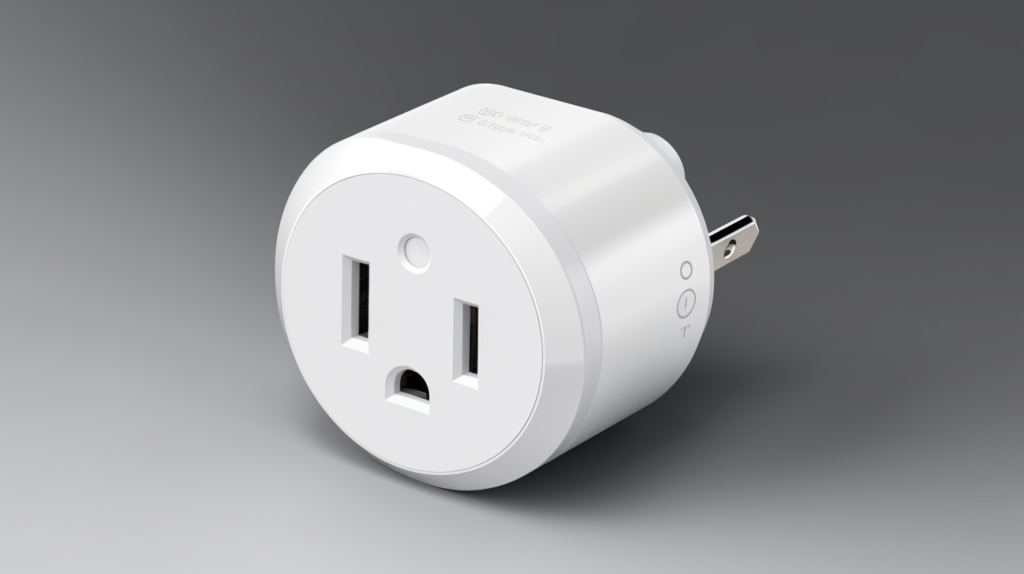
Smart plugs are one of the essential accessories for your smart home assistant. These devices allow you to control and automate the power supply to your regular electrical devices. Connecting your devices to smart plugs lets you quickly turn them on or off remotely using your smart home assistant or smartphone app. This feature adds convenience and flexibility to your home, enabling you to manage devices such as lamps, fans, coffee makers, and more with a voice command or a few taps on your phone.
Smart Bulbs:
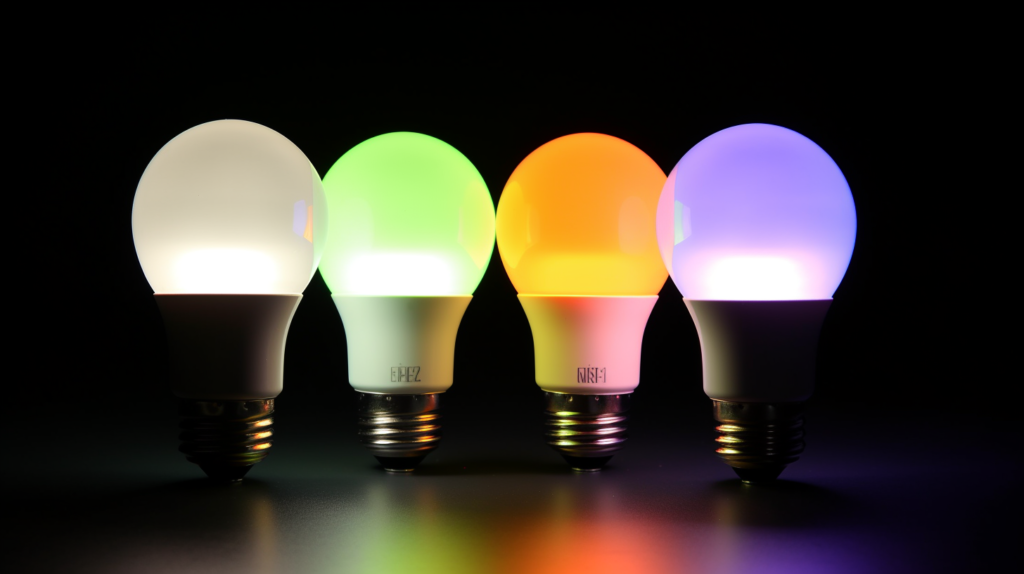
Smart bulbs are another popular accessory that can enhance your smart home experience. These innovative light bulbs can be controlled wirelessly, allowing you to adjust their brightness and color, set schedules, or create lighting scenes. You can effortlessly control your lighting environment using voice commands or smartphone apps by integrating smart bulbs with your smart home assistant. Whether it’s setting the mood for a cozy movie night or waking up to a gentle sunrise simulation, smart bulbs offer versatility and customization options for your lighting needs.
Smart Thermostats:
Smart thermostats are an excellent addition to your smart home assistant setup, enabling you to optimize your home’s temperature and energy efficiency. These devices can learn your temperature preferences, adjust automatically based on occupancy, and even connect to weather forecasts to optimize your heating and cooling systems. Integrating your smart thermostat with your smart home assistant lets you control and monitor your home’s temperature using voice commands or smartphone apps, ensuring comfort and energy savings.
Smart Security Systems:
Enhancing your smart home assistant with a smart security system can provide peace of mind and an extra layer of protection. These systems typically include smart cameras, door/window sensors, and smart locks. Connecting your security system to your smart home assistant allows you to monitor and control your home’s security remotely. Receive real-time alerts, view camera feeds, lock or unlock doors, and even simulate occupancy when you’re away, all through the convenience of your smart home assistant.
Smart home assistant accessories, including smart plugs, smart bulbs, smart thermostats, and smart security systems, can significantly enhance your smart home experience. These accessories add convenience, flexibility, and automation to your daily routines, allowing you to control and customize various aspects of your home environment. Integrating these accessories with your smart home assistant allows you to enjoy seamless control using voice commands or smartphone apps, making your life even more convenient. Explore the possibilities and discover how smart home assistant accessories can transform your home into a brilliant, personalized living space.
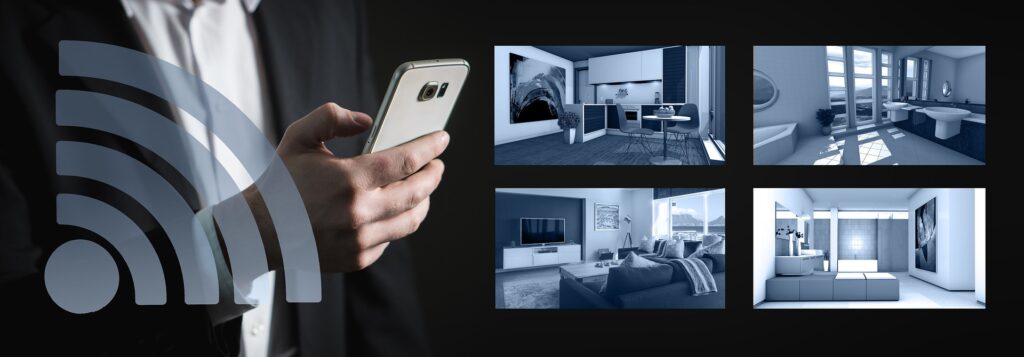
Conclusion and recommendations
In conclusion, smart home assistants are an excellent addition to any modern home. They can make your life more convenient and save money on energy bills. Consider compatibility, capabilities, and cost when choosing a smart home assistant. Based on my research, I recommend Amazon Alexa or Google Assistant for most users. These devices are affordable, easy to use, and offer many features.
